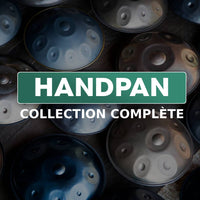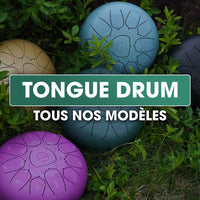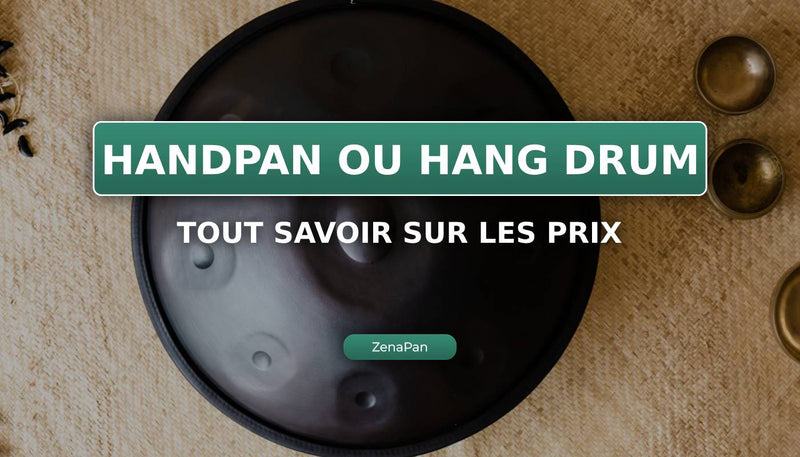The Handpan is a music instrument that does not come off large production lines. Making a Handpan takes time and requires not "makers" but real "craftsmen".
Make a Handpan is an art, and giving it its resonance, offer him his range, ensure its harmony in chords melodious calls for the greatest dexterity.
How did this angelic-sounding instrument come about? What are the secrets of making a Handpan? Immersion in the workshops of the Handpan makers, whose works are available for purchase at Zenapan.
Make a Handpan by carving a sheet of steel
The first step in the manufacture of a Handpan is based on the choice of the steel sheet. There are two different types of steels:
- Nitriding steel (DC04),
- Stainless steel.
Handpans are very often made with a nitrided steel, so we will start by exposing this one, before looking at the others.
nitrided steel
Nitrided steel is a steel treated by thermochemistry. As the name of this technique suggests, nitriding is based on heating the steel, into which nitrogen is injected.
This nitrogen injection has two main functions:
- It strengthens the Handpan,
- It protects it from rust.
However, the use of this type of steel has some drawbacks. The first is that nitriding does not prevent the appearance of rust but slows it down. It is therefore necessary to take particular care of your instrument.
The second is that the nitriding changes the length of his of the instrument. Nitrided Handpans, which make up the vast majority of instruments today, develop a sound that sustains it (called sustain) in English, is shorter.
The sound of Nitrided Steel Handpans is also changed. It becomes more clayey, and is often referred to as "ceramic" by musicians.
Conversely, nitriding makes it possible to obtain a louder sound, which greatly facilitates the outdoor game. It also helps maintain l'instrument granted for years.
stainless steel
Stainless steel (stainless steel) is sometimes used by manufacturers because it does not rust. It therefore does not require the maintenance required by a Nitrided steel handpan.
The making a Handpan Stainless steel also guarantees him a greater freedom of places to play. That is to say, it can be played anywhere, whether by the sea or in humid regions.
The sound quality is also different. The duration of the note is longer, its melody deeper. However, the sound is much less loud. It is therefore much more than a indoor instrument.
However, the Stainless steel handpans have a very big defect: their non-resistance to heat. Played in the summer sun, or forgotten in the heat, and your Handpan disagrees.
Either it will return to its original tuning when cool, or it will need to be retuned by the manufacturer.
Hammering the structure to form the dome
Forming the dome requires great technical skill. The steel sheet is bolted to a bracket and the hammering can start. It will continue until the shape of the dome is complete and will continue until it is perfectly flat again.
The craftsman will then note the location of the notes inside the dome and begin a first tuning work giving the curved shapes to the Handpan. A long work then begins to form a first accord.
The dome will then be heated to 400°C for about two hours to reinforce its structure, then the craftsman resumes tuning the dome.
A second sheet of metal will be placed on a support to be hammered to form the base of the Handpan. It will then be glued to the upper part of the instrument.
Thermochemical treatment by nitriding
The nitriding of the steel is carried out at a temperature of approximately 500°C. Nitrogen is sprayed onto the instrument area so that the metal strengthens and becomes more resistant to rust.
Nitriding not only contributes to making the handpan less prone to corrosion but also increase its stability. It is this step that allows the instrument to remain in tune for many years.
The final tuning

Tuning a Handpan requires great precision in the handling of the hammers. Each note is obtained thanks to a greater or lesser depth of form. Precision is therefore essential in obtaining a fair and precise sound.
Any frequency can be achieved, but in general Handpans have a 440Hz frequency, in line with classical Western instruments. This allows Handpan percussionists to perform in gigs with other instruments.
The importance of precision in handpan tuning lies in the need not to create interference. That is to say crossing zone between two notes, which would have the effect of creating false notes. A bit like playing two strings at the same time on a violin.
It is for this reason that the majority of Handpans do not have more than nine notes, in order to avoid these interferences, and therefore to lose musical quality.











